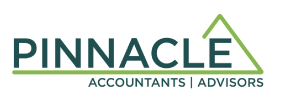
Wages or Dividends – Focus on CPP
When an individual runs a business in a corporation, they have the choice whether to pay themselves through wages or dividends. There are several considerations that factor into this decision, one of them being contributions to the Canada Pension Plan, or CPP.
What’s the difference?
When a shareholder is remunerated by wages, the process is similar to any other employee – they earn a gross amount, deductions are withheld for CPP and income tax, and the remaining amount is transferred from the corporation to the employee. The company also pays an equal amount of CPP as the employee, often referred to as “payroll tax,” which is remitted to the CRA, along with the employee’s deductions. The totals of the gross wages and withholdings in a calendar year are tallied and reported to the CRA by the corporation on a T4 slip.
When a shareholder is remunerated by dividends, the company transfers the full amount of the dividend to the shareholder without any withholdings. The total of the dividend payments in a calendar year are tallied and reported to the CRA by the corporation on a T5 slip.
Why should you care?
According to the Government of Canada’s website, the CPP “is a monthly, taxable benefit that replaces part of your income when you retire.” How much each individual receives in retirement is based on a variety of factors, such as:
- The age you decide to start your pension
- How much and for how long you contributed to the CPP
- Your average earnings throughout your working life
From one perspective, contributing to CPP is forced savings for your retirement – you don’t have to think about putting it in a savings account, someone else worries about how the funds should be invested, and, once you apply for the CPP benefit (between your 60th and 70th birthday), you receive the benefit for the rest of your life.
If a shareholder is remunerated by dividends, their CPP contribution is eliminated for that year and their monthly CPP benefit is reduced in retirement.
Is it a good investment?
In an Advisor.ca article, Benjamin Felix and Aravind Sithamparapillai state that the rate of return on CPP contributions is between 2.1% and 3.1%. Some stock-market-savvy business owners may see that rate of return and believe they can do much better, but would they?
From the article – “The CPP benefit is one of the only ways for many Canadians to access an inflation-indexed annuity, an extremely valuable asset for retirees.” The monthly CPP contribution should be considered an investment in an asset rather than a tax, and the risk related to this investment needs to be compared to other investment opportunities.
How is your will power?
Perhaps the most important consideration is the business owner’s commitment to retirement savings. If they were to opt out of the CPP by receiving dividends, not only would they need to use some of that cash to pay for the personal tax related to the dividend, but they would also need to ensure they are regularly contributing to a retirement savings plan. They would also need to manage that plan in such a way that meets or exceeds the rate of return of their foregone CPP contributions.
For some people, this is no problem – there are ways to automatically send tax installments to the CRA and to transfer funds from chequing accounts to savings or investment accounts. For others, the temptation to use everything received from their corporation to fund their lifestyle is too great and retirement savings are forgotten.
Discuss your options
If you’d like to explore these and other considerations regarding wages versus dividends, give the Pinnacle Accountants & Advisors team a call and we can help determine the right course of action for your situation.
Written by: Rob Fahie
Government of Canada CPP Information: https://www.canada.ca/en/services/benefits/publicpensions/cpp.html
Advisor.ca Article: https://www.advisor.ca/practice/planning-and-advice/should-business-owners-avoid-cpp-by-paying-themselves-dividends/
